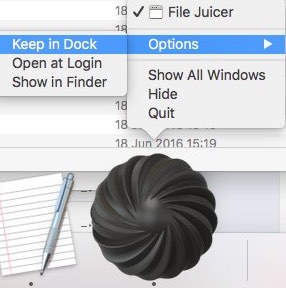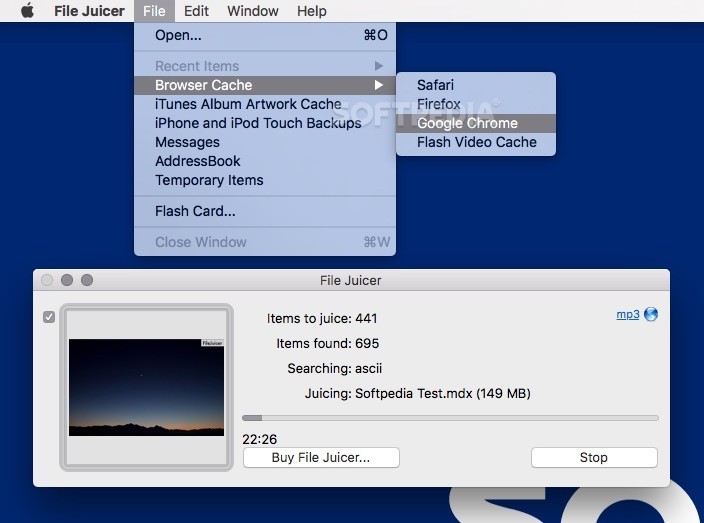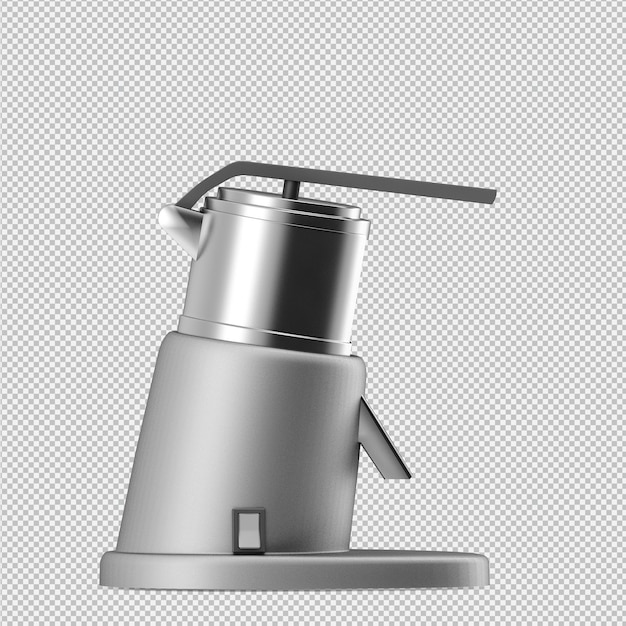
THE FILE JUICER FOR MAC OS X
For Mac OS X 10.5 Leopard and is an app in the security & privacy category. if you have old files you can no longer open with current applications File Juicer is described as Extract images from PDF, PowerPoint, Word, Excel and other files.
THE FILE JUICER PDF
if you want to extract the images/sounds/videos from a PDF or Word document.
THE FILE JUICER MANUAL
(See the manual for details.) This is useful: File Juicer does't convert the images/sounds/videos it finds, but saves them unchanged in their original format if possible. Juicer consists of two parts: the pipeline that creates Hi-C files from raw data, and the post-processing command line tools. It finds and extracts: JPEG, JP2, PNG, GIF, PDF, BMP, WMF, EMF, PICT, TIFF, Flash, ZIP, HTML, WAV, AVI, MOV, MP4, MPG, MP3, AIFF, AU, WMV, or text from files which contain data in those formats. In computer forensics this is called carving. Its specialty is to find and extract images, video, audio, or text from files which are hard to open in other ways. Adding the /f option, e.g., chkdsk /f e: will cause the utility to attempt to repair any file system problems it finds, which, of course, will alter the media, but if the problem is caused by file system corruption, it might recover files for you.File Juicer is a drag-and-drop can opener and data archaeologist. If the file system on the drive is FAT, FAT32, or NTFS, which is likely if it is connected to a Microsoft Windows system, you could from a command prompt run chkdsk against the drive, e.g., chkdsk e:, if it was drive E. Make a copy and work with the copy, since if you plug the drive into an OS X system, it will write files to it when you connect it. But, if you tamper with the media on which your data is currently stored, if there is some physical problem with the media, the file system is corrupted, etc., altering that media by writing to it may make it impossible to successfully use some other tool to recover your data.įor that reason, if the pen drive hasn't previously been attached to an Apple OS X system, don't plug it into one to use a tool on the OS X system. It is best to preserve the original storage media in its current state in case a tool you try doesn't resolve your problem, so that you've still got the storage media in its original state, since some other tool might be able to resolve your problem. WMV, MP4, AU, AIFF or text file inside, it can save it to your desktopĭo not run an image extraction tool on the 1.5 GB file stored on the pen drive copy that file to somewhere else and then use the tool against the copy you made. If it finds a JPEG, JP2, PNG, GIF, PDF,īMP, WMF, EMF, PICT, TIFF, Flash, Zip, HTML, WAV, MP3, AVI, MOV, MPG, If you have access to a Mac system running OS X, you could try File Juicer:įile Juicer doesn't care what type file you drop onto it it searches Of working with most file types (and won’t break because there’s someĮven if some, but not all of your images, were JPEG files, it may at least help you recover some of the original files. Give the program, it does precisely the same thing, just searching forĪnd extracting any embedded JPEGs. PDF file, a spreadsheet, a database or anything else whatever you DeJPEG doesn’t care whether the target is a The best part of this approach is that it’s not relying on any Structures, and saving anything it finds as separate files. It features an attractive interface, a host of after-search operations and flexible administrative settings. It supports all file formats, filters files by date, type, size and keywords.

Effective File Search finds files within a PC or local network. Through every byte of the source file, looking for JPEG-like File Juicer, free file juicer software downloads.


Point it at your document, click “Analyze”, and the program will scan
THE FILE JUICER PORTABLE
The program is compact, portable and extremely straightforward. If your images were JPEG images, you could try a tool like deJPEG, which is freeware:


 0 kommentar(er)
0 kommentar(er)
